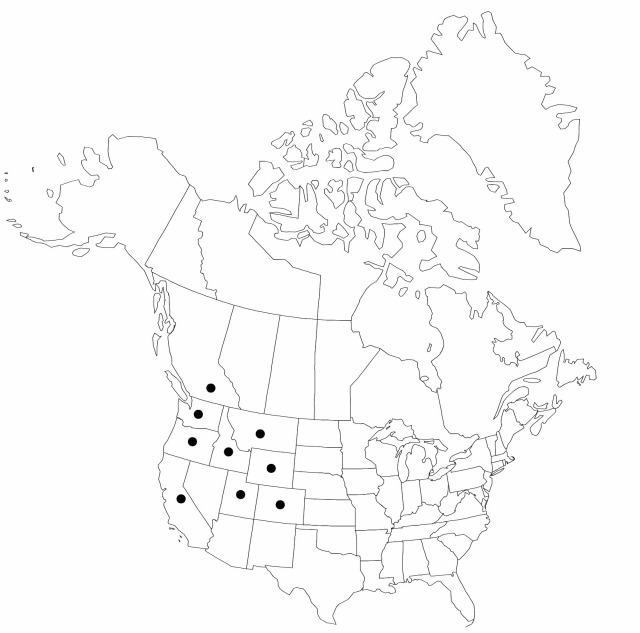familyCyperaceae
genusCarex
sectionCarex sect. Scirpinae
speciesCarex scirpoidea
subspeciesCarex scirpoidea subsp. pseudoscirpoidea
Carex scirpoidea subsp. pseudoscirpoidea
Novon 7: 355. 1998.
IllustratedEndemic
Basionym: Carex pseudoscirpoidea Rydberg Mem. New York Bot. Gard. 1: 78. 1900
Synonyms: Carex scirpoidea var. pseudoscirpoidea (Rydberg) Cronquist
Treatment appears in FNA Volume 23.
Plants not cespitose; rhizomes long. Culms erect, 5–31 cm. Leaves: sheaths and bases from previous year’s leaves persistent; blades widely V-shaped in cross-section, to 21 cm × 3 mm. Scales ovate, 2.8 × 1.5 mm. Perigynia ovate, (1.5–) 2–2.8 (–3) × 1.5 mm, body tightly enveloping achene for entire length. Achenes 1.5–1.8 × 0.9–1.2 mm.
Phenology: Fruiting Jun–Sep (depending on elevation).
Habitat: Dry ridge sites, fellfields with gravelly and noncalcareous soils
Elevation: 3300–3900 m
Distribution

B.C., Calif., Colo., Idaho, Mont., Oreg., Utah, Wash., Wyo.
Discussion
Compared to Carex scirpoidea subsp. pseudo-scirpoidea, C. scirpoidea subsp. scirpoidea occurs at relatively lower elevations and in wetter sites with calcareous soils.
Selected References
None.
Lower Taxa
None.
"shortened" is not a number.
... more about "Carex scirpoidea subsp. pseudoscirpoidea"
enveloped +
trigonous +
smaller +
0.9mm;1.2mm +
basifixed +
distal +
hirsute +
3/4 +
rounded;tapering;acute;obtuse +
0.1 cm1 mm <br />0.001 m <br /> (?) +
absent +
glabrous +
v--shaped +
3 cm30 mm <br />0.03 m <br /> (?) +
leaflike +
1;many +
filiform +
2;3 +
35cm;40cm +
redbrown +
erect +
basal +
abundant +
single +
unisexual +
white +
Present +
unispicate +
shorter or longer +
scale-like +
ellipsoid +
pseudoumbel +
modified +
persistent +
absent +
hyaline +
fused +
prominent +
distinct +
circular +
arranged +
falling +
absent +
with (1-)3-6(-30) bristles and/or scales +
thin +
width +
redbrown +
erect +
1.5 cm15 mm <br />0.015 m <br /> (?) +
2-3(-4)-carpellate +
fused +
absent +
absent +
pistillate +
subtending +
pistillate +
Novon +
1998 +
arranged +
absent +
adventitious +
fibrous +
empty +
longer +
1;0;1 +
fertile +
ovate +
equal +
1.5 cm15 mm <br />0.015 m <br /> (?) +
persistent +
puberulent +
membranous +
absent +
cylindric +
arranged +
single +
unisexual +
1-flowered +
distinct +
papillate +
undivided +
deciduous +
2-3(-4)-fid +
Carex scirpoidea subsp. pseudoscirpoidea +
Carex scirpoidea +
subspecies +
free +
thin +
rhizomatous +
perennial +
short to long +
31;29 +
